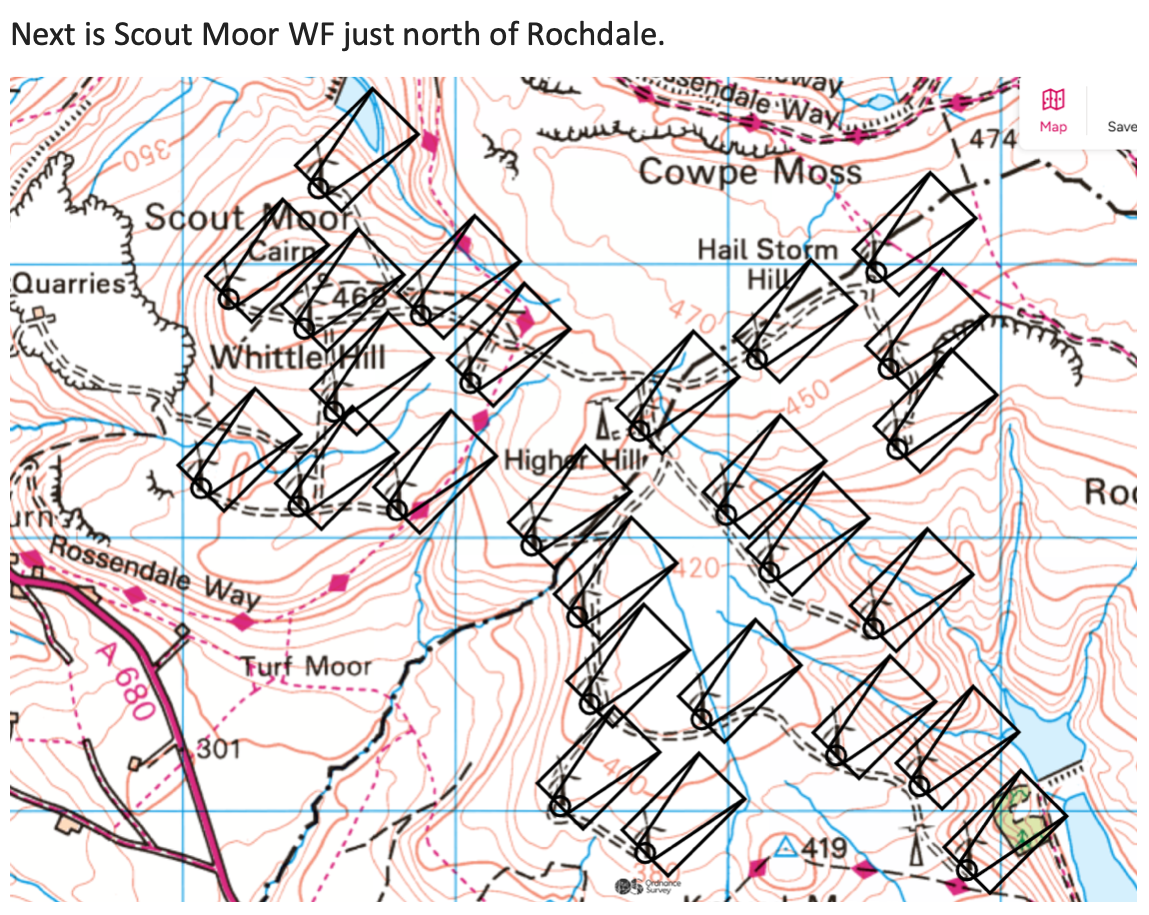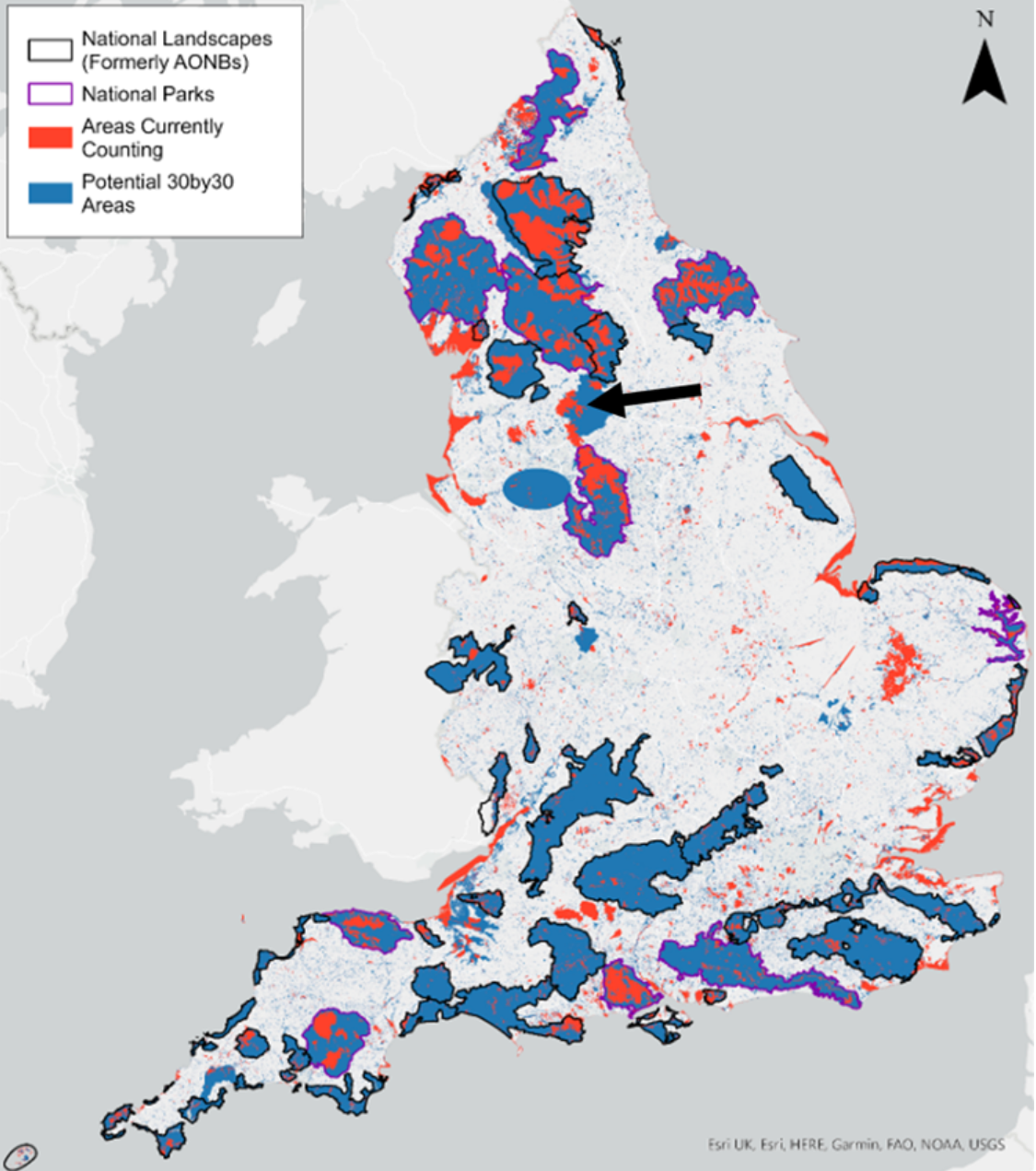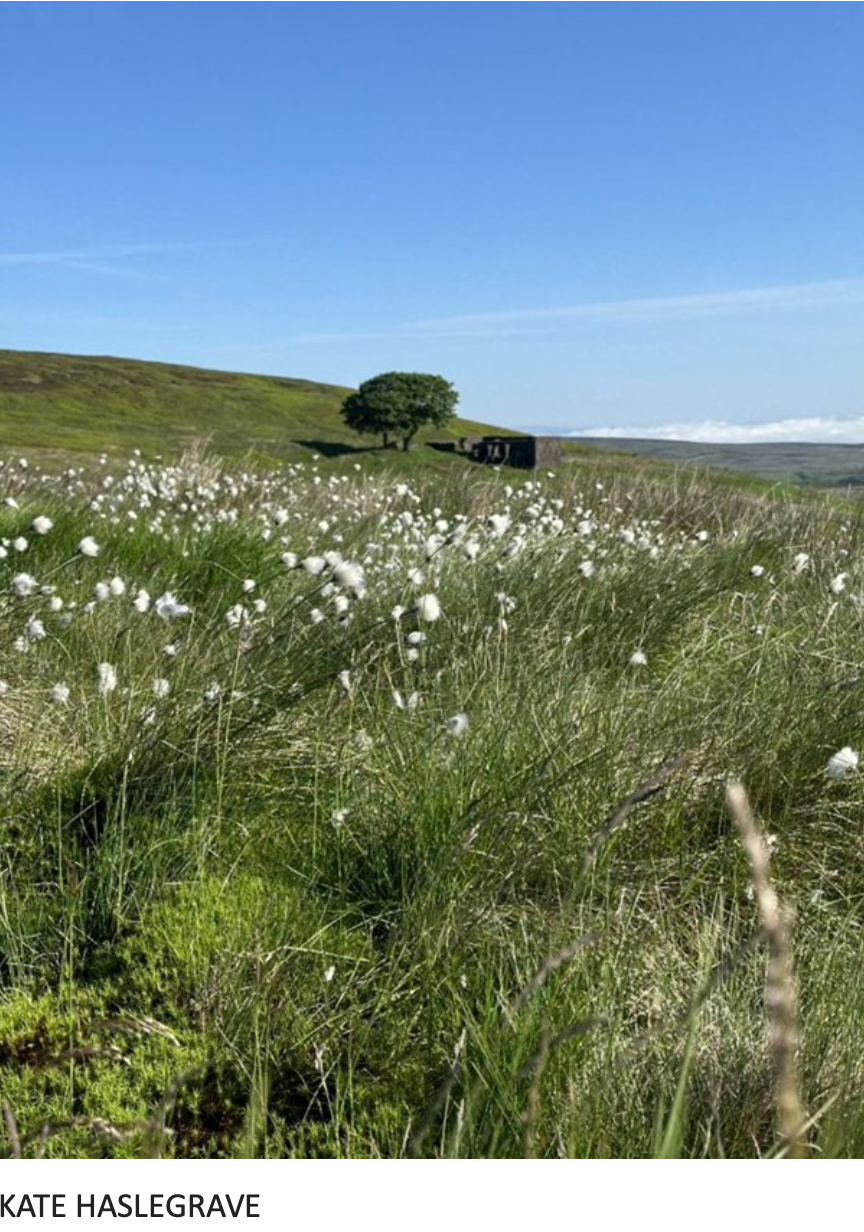[Two CWF Ltd projects clogging up the NESO TEC register with 482 MW of collapsed wind farm. NESO TEC register screenshot: Nick MacKinnon]
Where should the turbines be built?
There is a remarkable map, published by Friends of the Earth, who are even more enthusiastic for onshore wind than Windpower Monthly, which shows the vast available area for wind turbines within 5 km of a substation. The Friends map avoids the internationally designated land (Dartmoor, single-designated Exmoor, the Farne Islands and double-designated Walshaw Moor, for example) and the less protected (because only nationally designated) National Parks like the Lake District and the New Forest. The Friends map puts a 2 km buffer around the internationally and nationally designated land and finds that we can have fifty times more wind and solar in the UK than we presently have. There is therefore absolutely no need to tear up our international treaties or build wind farms in the Norfolk Broads. These facts are well-known to all wind farm professionals.
Do you have a response to those who argue that the climate crisis and global heating poses the greatest single threat to ecology in moorland, bogs and peatland like this through e.g. increasing prevalence of wildfires, biodiversity collapse (and that to minimise those things, renewable energy is necessary)?
Wind farms drain peat and make it more likely to burn. The cheapest thing the UK can do to avert the next climate change tipping point is to rewet our blanket bogs, not dry them out. The tragedy of wind farms (and before that Sitka) on deep Scottish peat must not be repeated in England. The Scottish peat tragedy is what happens if you let the landowners decide where the wind farms are going. We should never again build a wind farm on deep peat.
Do practices like overgrazing and burning pose threats to this landscape and ecology?
Burning old heather will soon be forbidden on all deep peat. There is an agreement on Walshaw Moor between the Estate and Natural England, which we pay for, and which runs from 2018 to 2042. The Estate maintain the agreement rigorously. One consequence has been the extraordinary increase in red-listed birds breeding successfully on Walshaw Moor. It is a national wonderland.
Readers wishing to assess this point should walk a June morning on Walshaw Moor (so much curlew, lapwing and golden plover racket that you can’t hear the skylarks and meadow pipits) and another on high ground in the Yorkshire Dales National Park, which is almost silent. We need to find out why this is. We are delighted that Windpower Monthly is taking such an interest in the extraordinary ecology on Walshaw Moor.
The current definition of deep peat in England is 40 cm, but 30 cm will soon be the definition. Calderdale Energy Park will destroy vast areas of deep peat by direct excavation and subsequent drying. The drying effect is much more destructive, as expert readers know. The next tipping point in climate change is when uncontrolled wildfires occur in boreal forests and peat deposits in a ring around the Arctic at our latitude. The UK can have an extraordinarily strong leadership role on this point, because we have a lot of blanket bog. Scotland has begun to wake up to what they have done with their peat. England is already wide awake as government statements on peatland have demonstrated. Thanks to the Scottish tragedy, England will not make the same mistakes.
What about Kate Bush?
Walshaw Moor is one of the most famous pieces of high ground in the world and the inspiration of the Brontë Sisters, themselves three of the most famous women in world history. Nobody over 55 will forget the explosion of Kate Bush onto Top of the Pops on 16 February 1978. We had no idea this was coming! Hundreds of millions of people know now.
No government wants us to be a joke abroad. The fame of Walshaw Moor draws people from all over the world who will be astonished to find the UK plans a wind farm above Kate Bush’s Wuthering Heights. They will be even more astonished if the Kunming-Montreal treaty unravels on Walshaw Moor, as will Sir David Attenborough.
Since the cutting down of the tree in Sycamore Gap, for which the vandals will serve up to four years and three months at His Majesty’s Pleasure, the most iconic sycamores remaining in Britain are the two at Wuthering Heights.












